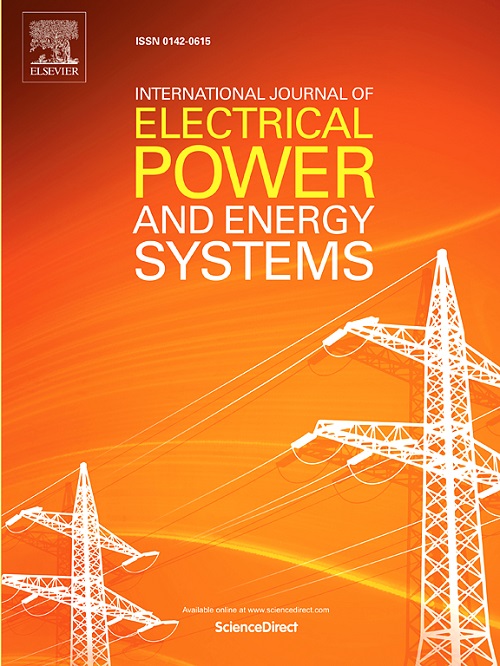Research on primary frequency regulation and VSC-HVDC frequency synchronization control coordination method for large-scale hydropower DC export regional grid
IF 5
2区 工程技术
Q1 ENGINEERING, ELECTRICAL & ELECTRONIC
International Journal of Electrical Power & Energy Systems
Pub Date : 2025-04-10
DOI:10.1016/j.ijepes.2025.110655
引用次数: 0
Abstract
In asynchronous grid connection mode, the rotational inertia of the partitioned synchronized grid decreases, leading to prominent frequency stability issues. A bi-level optimization design method is proposed based on VSC-HVDC frequency synchronization control (VSC-FSC) and coordinated control of primary frequency regulation in hydropower. Additionally, to mitigate power counter-regulation caused by the water-hammer effect, an auxiliary control responsive to the water-hammer effect is introduced into the VSC-FSC. Firstly, the characteristics of VSC-FSC and primary frequency regulation of the power grid are analyzed. Then, based on the characteristics of VSC-FSC and its coordination with primary frequency regulation in hydropower, a bi-level optimization model for control parameters is constructed. An evolutionary algorithm is used to solve the optimal parameters hierarchically progressively. Finally, a simplified test system for the Luxi back-to-back HVDC and an improved 7-generator 36-node DC asynchronous extensive power grid system based on the IEEE standard model were developed in real-time digital simulation (RTDS) to validate the effectiveness of the proposed coordinated control method.
大型水电直流出口区域电网一次调频与 VSC-HVDC 频率同步控制协调方法研究
在异步并网模式下,分区同步电网的转动惯量减小,导致频率稳定问题突出。基于 VSC-HVDC 频率同步控制(VSC-FSC)和水电一次频率调节协调控制,提出了一种双级优化设计方法。此外,为缓解水锤效应引起的功率反调节,在 VSC-FSC 中引入了响应水锤效应的辅助控制。首先,分析了 VSC-FSC 和电网一次频率调节的特性。然后,根据 VSC-FSC 的特点及其与水电一次频率调节的协调性,构建了控制参数的双级优化模型。采用进化算法逐级求解最优参数。最后,在实时数字仿真(RTDS)中开发了一个简化的鲁西背靠背高压直流试验系统和一个基于 IEEE 标准模型的改进型 7 发电机 36 节点直流异步广泛电网系统,以验证所提出的协调控制方法的有效性。
本文章由计算机程序翻译,如有差异,请以英文原文为准。
求助全文
约1分钟内获得全文
求助全文
来源期刊
CiteScore
12.10
自引率
17.30%
发文量
1022
审稿时长
51 days
期刊介绍:
The journal covers theoretical developments in electrical power and energy systems and their applications. The coverage embraces: generation and network planning; reliability; long and short term operation; expert systems; neural networks; object oriented systems; system control centres; database and information systems; stock and parameter estimation; system security and adequacy; network theory, modelling and computation; small and large system dynamics; dynamic model identification; on-line control including load and switching control; protection; distribution systems; energy economics; impact of non-conventional systems; and man-machine interfaces.
As well as original research papers, the journal publishes short contributions, book reviews and conference reports. All papers are peer-reviewed by at least two referees.

 求助内容:
求助内容: 应助结果提醒方式:
应助结果提醒方式:


